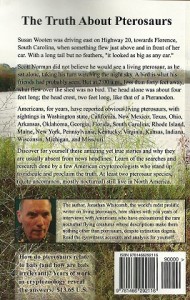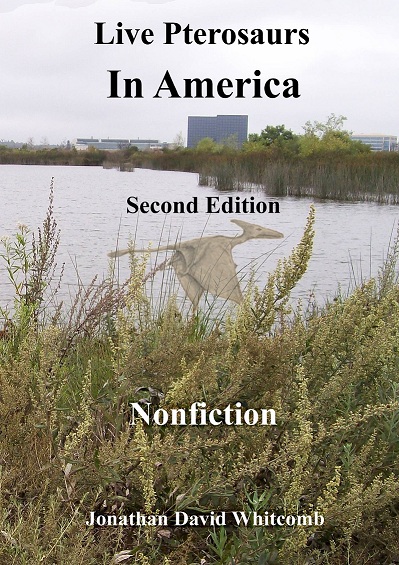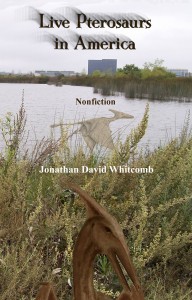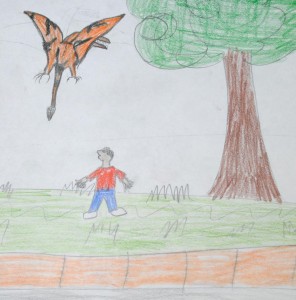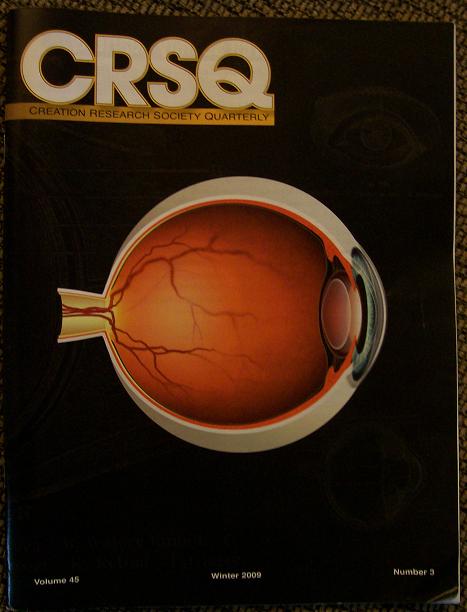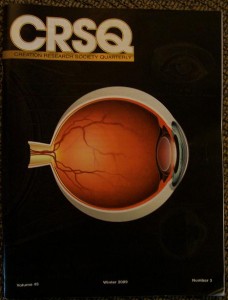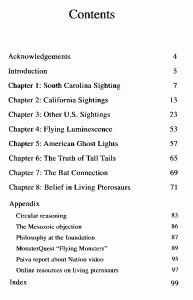I recently received an email from Joan Wilmington, a reader of the second edition of my book Live Pterosaurs in America:
Hi, Jonathan. I just finished reading Live Pterosaurs in America. Fascinating book. I had no idea so many sightings had occurred in the United States. . . . As I read the book, several questions came to mind. I’d love to get your insight on them:
1) How do pterosaurs deal with the cold? I noticed that several sightings were in areas that have very cold winters. Do you think they are warm-blooded by any chance? I know at this point, it would only be speculation, but I’m curious. How do they cope with the cold, without the insulating effects of fur or feathers?
2) Do you think they hibernate or migrate?
I include the second question, for it relates to the first: the challenge of cold winter weather in most of North America. But first we need to consider the rarity of sightings, in relation to common observations of most birds. I agree with Garth Guessman that pterosaurs in the 48 contiguous states are not rare to the point of being in danger of extinction. Hopeful as that idea might seem, we have struggled with the relative rarity of sighting reports, for that kind of rarity gives us limited data to analyze.
I doubt that any other cryptozoologist has a larger collection than I do, of reports of sightings of living pterosaurs in North America; many eyewitnesses have sent me emails, over the past eight years, reporting their sightings. If every report were highly detailed, including details about weather and date-of-sighting, I might come to some conclusion about how modern pterosaurs in North America deal with cold weather; but I do not have hundreds of detailed reports from this part of the world, so I can only apply general common sense: I speculate. But I do have a few details to guide speculation.
But let’s begin by considering well-known animals that must survive cold winters in North America.
How do Bats Survive the Cold?
The Big Brown Bat, Eptesicus fuscus, at about half a pound (see Wikipedia for details on this bat), survives quite well:
[These bats] hibernate during the winter months, often in different locations than their summer roosts. Winter roosts [are in] . . . caves and underground mines where temperatures remain stable; it is still unknown where a large majority of Big Brown Bats spend the winter. If the weather warms enough, they may awaken to seek water, and even breed. [Wikipedia]
I was struck by how little is known about where most Big Brown Bats spend the winter. If that common bat, with a Conservation Status at the extreme safe side (“Least Concern”), holds that kind of mystery, how easy it is for an elusive uncommon flying creature to keep hidden in winter (when most humans are usually indoors almost all the time, never trudging through any snow-covered wilderness to hunt dragons)! For that reason, I’m not holding my breath waiting for an eyewitness account of a hibernating pterosaur.
How do Reptiles Survive the Cold Winters of Canada?
Many birds escape the cold winters by migrating to warmer places, but, aside from marine turtles, reptiles can’t travel large distances. Instead, reptiles must either tolerate the cold or go underground or underwater to escape it.
. . . In places where winters are very cold . . . sites where reptiles can get deep enough underground to survive the winter may be rare. In these cases, hibernating sites may be shared by many animals, and animals may travel from far away to use the site. . . . communal hibernation.
Four generations are involved in the migratory cycle of the Monarch Butterfly. According to monarch-butterfly.com, the fourth generation “is born in September and October and goes through exactly the same process as the first, second and third generations except for one part. . . . [It] does not die after two to six weeks. Instead, this generation of monarch butterflies migrates to warmer climates like Mexico and California . . . [living] for six to eight months until it is time to start the whole process over again.”
Pterosaur Survival in Winter
We could delve into where and how a mouse or bird or fish survives when the coldness arrives, but the point is this: Small mammals, birds, fish, reptiles, and butterflies survive cold winters (or migrate), so large pterosaurs should have some way to do the same or something similar.
I was about to let the subject drop with that, but you readers who have gotten this far deserve to know something more. In a secret location, monitored by a few cryptozoologists occasionally for a few years, nocturnal flying creatures, apparent pterosaurs, fly in an area of North America where bats are found through at least most of the year. The larger creatures appear to fly in this area during colder weather, at least to some extent. I believe they hunt the bats, but I have not yet been invited to participate in the observations there, so I have still not yet personally encountered a modern living pterosaur. I still hope.



